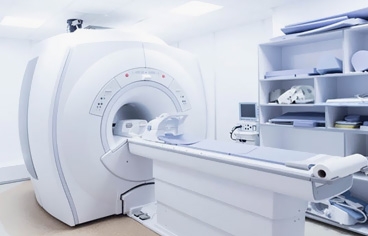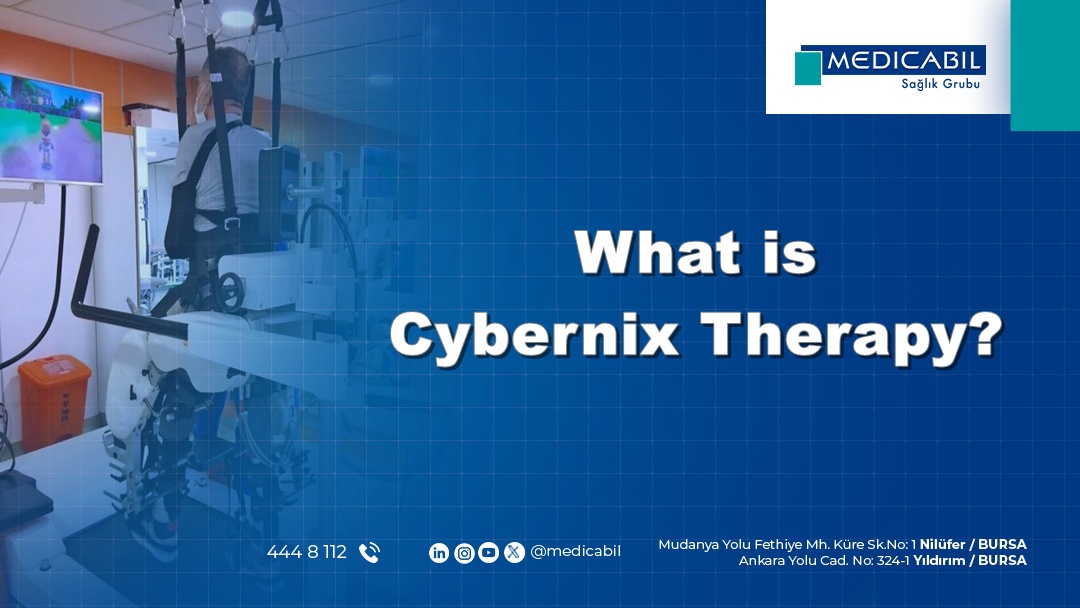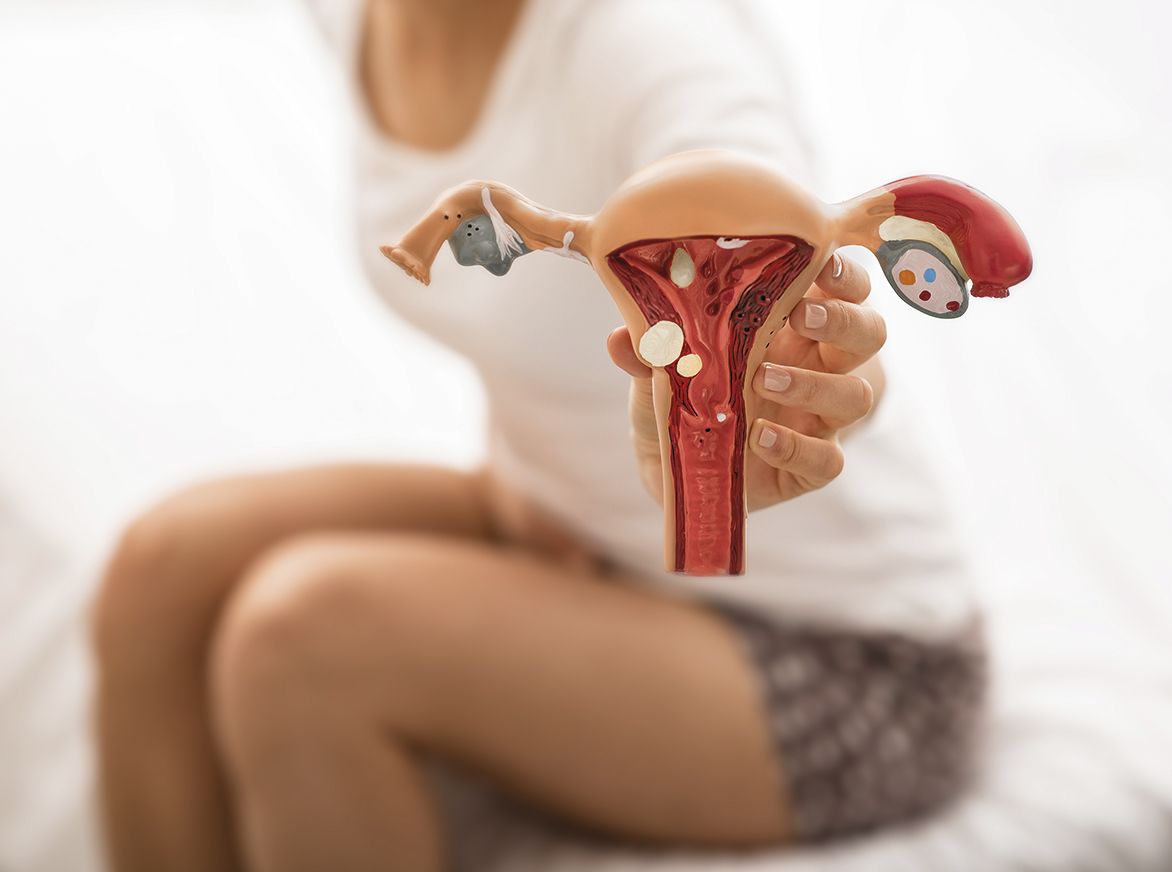What is MRI? How to Take an MRI with Medication? Is It Harmful?
- Home
- What is MRI? How to Take an MRI with Medication? Is It Harmful?

What is MRI? How to Take an MRI with Medication? Is it harmful? In our article titled, we will touch upon all the details on the subject. MRI (magnetic resonance imaging) scan; It is a test that creates clear images of structures in the body using a large magnet, radio waves and a computer. Doctors use MRI scanning to evaluate, diagnose and monitor many different medical conditions.
What is MRI?
An MRI (magnetic resonance imaging) scan is a painless test that produces very clear images of organs and structures in the body. MRI uses a large magnet, radio waves and a computer to produce these detailed images. X-rays (radiation) are not used in an MRI scan.
Because MRI does not use X-rays or other radiation, it is the imaging test of choice when people need frequent imaging, especially for the purposes of diagnosing or monitoring their brains.
What is Open MRI?
Open MRI is a term that refers to the type of machine that takes the images. Generally, an open MRI machine has two flat magnets positioned above and below the patient, with a large space between them to extend. This provides open space on both sides and greatly alleviates the claustrophobia that many people experience in closed MRI machines.
However, open MRI devices do not take as clear images as closed machines. Closed MRI machines have an open hole or a tube-shaped ring of magnets around the exposed area to capture images. Closed MRI devices have a narrow space. This may cause anxiety and discomfort for some people, but this type of MRI machine produces the highest quality images.
If the patient is nervous about an MRI scan or is afraid of closed spaces, they should definitely talk to their doctor about this. If necessary, the doctor will consider sedatives (drugs that will make you feel more comfortable) and even anesthesia options.
What is Medication (Contrast) MRI?
In some MRI examinations, contrast material is injected. The contrast material contains gadolinium, a rare earth metal. When this substance is present in the body, it improves the quality of images by changing the magnetic properties of nearby water molecules. This increases the sensitivity and clarity of diagnostic images.
Contrast material increases the visibility of:
- Tumors
- Inflammation
- Infection
- Blood supply of certain organs
- Blood vessels
If MRI requires contrast material, a healthcare professional will insert an intravenous catheter (IV line) into a vein in the hand or arm. This intravenous line will be used to inject contrast material.
Contrast agents are safe drugs. Side effects ranging from mild to severe may occur, but serious reactions are very rare.
What is the Difference Between MRI and Computed Tomography?
Magnetic resonance imaging (MRI) uses magnets, radio waves, and a computer to create images of the inside of the body, while computed tomography (CT) uses X-rays and computers.
Doctors often choose to use MRI scans instead of computed tomography scans to look at non-bony parts of the body or soft tissues. MRI scans are much safer because they do not use the harmful ionizing radiation of X-rays.
MRI scans also take much clearer images of the brain, spinal cord, nerves, muscles, ligaments, and tendons than regular X-rays and computed tomography scans.
However, not everyone can have an MRI. The magnetic field of an MRI can dislodge metal implants or affect the function of devices such as pacemakers and insulin pumps. In this case, a computed tomography scan is the best option.
An MRI scan is generally more expensive than an X-ray or computed tomography scan.
What Does MRI Show?
Magnetic resonance imaging (MRI) produces detailed images of the inside of the body. Using an MRI scan, doctors can look at and evaluate many different structures in the body, including:
- Brain and surrounding nervous tissue.
- Organs in the chest and abdomen, including the heart, liver, bile ducts, kidneys, spleen, intestines, pancreas and adrenal glands.
- Breast tissue.
- Spine and spinal cord.
- Pelvic organs, including the bladder and reproductive organs (such as the uterus and ovaries in women, the prostate gland in men).
- Blood vessels.
- Lymph nodes.
In Which Situations Is MRI Requested?
Doctors use magnetic resonance imaging (MRI) to help treat, diagnose, or monitor many different conditions. There are different types of MRI depending on which part of the body the doctor wants to examine.
Brain and spinal cord MRIs help evaluate and diagnose the following conditions:
- Brain aneurysms.
- Brain and spinal cord tumors.
- Brain and spine injuries resulting from trauma.
- Compression or inflammation of the spinal cord and nerves.
- Multiple sclerosis (MS).
- Spinal cord diseases.
- Spine anatomy and alignment.
- Stroke.
Doctors use cardiac (heart-related) MRIs for a variety of reasons, including:
- To evaluate the anatomy and function of the heart chambers and heart valves, the size and blood flow of the great vessels and surrounding structures.
- To diagnose cardiovascular conditions such as tumors, infections, and inflammatory conditions.
- To evaluate the effects of coronary artery disease, such as limited blood flow to the heart muscle and scarring of the heart muscle after a heart attack.
- To evaluate the anatomy and function of the heart and blood vessels in children and adults with congenital heart disease.
Thanks to body MRIs, physicians can evaluate the body and diagnose various conditions, including:
- Tumors in the chest, abdomen or pelvis.
- Liver diseases such as cirrhosis, problems with bile ducts and pancreas.
- Inflammatory bowel disease such as Crohn's disease and ulcerative colitis.
- Malformations of blood vessels and inflammation of the vessels (vasculitis).
- A developing fetus in the womb.
Bone and joint MRIs can help evaluate:
- Bone infections (osteomyelitis).
- Bone tumors.
- Disc abnormalities in the spine.
- Joint problems caused by injuries.
Doctors sometimes use breast MRI along with mammography to detect breast cancer, especially in people who have dense breast tissue or are at high risk of breast cancer.
Is MRI Safe?
MRI scanning is generally quite safe and poses almost no risk to the average person when proper safety guidelines are followed.
The strong magnetic field emitted by MRI machines does not harm the person, but it may cause subsequently placed medical devices such as implants to malfunction or distort images.
If an MRI scan requires the use of contrast material, there is a very low risk of an allergic reaction. These reactions are usually mild and can be controlled with medications. If people have an allergic reaction, a healthcare professional will be on hand for immediate assistance.
Doctors generally do not perform gadolinium contrast MRI scans on pregnant people unless absolutely necessary due to unknown risks to the developing baby.
Who Cannot Have an MRI?
In most cases, MRI examinations are quite safe for people with metal implants, except for a few types. Unless the device the patient has is confirmed to be safe for MRI, MRI may not be performed. These devices that are not considered safe for MRI are:
- Metal joint prostheses.
- Some cochlear implants.
- Some types of clips used for brain aneurysms.
- Some types of metal coils placed inside blood vessels.
- Some older cardiac defibrillators and pacemakers.
- Vagal nerve stimulators.
If the doctor recommends an MRI scan, he or she will ask detailed questions about the patient's medical history and any medical devices or implants they may have in their body.
Who Has the License to Perform MRI?
A radiologist or radiology technician will perform the MRI. A radiologist is a medical doctor who performs and interprets imaging tests to diagnose diseases. A radiology technician is a healthcare professional who is specifically trained and certified to perform MRI scans.
How Does MRI Work?
Magnetic resonance imaging (MRI) works by passing an electric current through coiled wires to create a temporary magnetic field in the body. A transmitter/receiver on the machine then sends and receives radio waves. The computer then uses these signals to create digital images of the scanned area of the body.
How to Prepare for an MRI?
A magnetic resonance imaging (MRI) scanner uses powerful magnets and radio wave signals that can cause heating or possible movement of some metal objects in the body. This may cause health and safety problems. It may also cause malfunction of some electronic medical devices implanted later in the body.
If there are metal-containing objects or subsequently implanted medical devices in the body, the healthcare professional who will perform the procedure must know about them before the MRI scan. Some implanted objects may require additional adjustments and special instructions. Although some other objects do not require special instructions, an x-ray may be required to check the exact location of the object before examination.
Patients who have any of the following should tell their doctor and the healthcare professional who will perform the MRI:
- Pacemaker or defibrillator.
- Electronic or implanted stimulators or devices, especially deep brain stimulators, vagus nerve stimulators, bladder stimulators, spinal stimulators, neurostimulators, and implanted electrodes or wires.
- Metallic joint prostheses.
- Cochlear implant or other ear implants.
- Implanted medication pumps, such as those that pump narcotic/pain medications or medications to treat spasticity.
- Programmable shunt.
- Aneurysm clips and coils.
- Stents not located in the heart.
- Filters such as blood clot filters.
- Metal fragments such as bullets and shrapnel in the body or eyes.
The following devices cannot be worn during MRI. The MRI appointment needs to be coordinated with the day the band or device in question needs to be replaced.
- Continuous glucose monitoring system (CGM).
- Insulin pump.
- Transdermal patches.
In addition, before the MRI scan, the personnel on duty must be informed about the following:
- Pregnancy status.
- Whether there is any obstacle to lying on your back for 30 to 60 minutes.
- Whether there is claustrophobia (fear of closed or narrow spaces).
All jewelry and other accessories should be left at home or removed before the MRI scan. Metal and electronic items are not allowed into the examination room as they could disrupt the MRI unit's magnetic field, cause burns, or turn into a bullet-like shape that could harm the person. Objects that are not allowed in are:
- Jewelry, watches, credit cards and hearing aids (These can all be damaged inside).
- Hairpins, metal hair accessories, underwire bras and metal zippers that may distort MRI images.
- Removable dental accessories such as dentures.
- Pens, pocket knives and glasses.
- Body piercings.
- Mobile phones, electronic watches and tracking devices.
How Long Does an MRI Scan Take?
Depending on the type of exam and equipment used, the entire procedure usually takes 30 to 50 minutes. The attending healthcare professional may give the patient a more precise time frame depending on the specific reason for the scan.
How is MRI Performed?
Most MRI scans are painless, but some people may find it uncomfortable to remain still for 30 minutes or longer. Some patients may be concerned about being in a closed area for a long time while in the MRI machine. Additionally, the machine may cause discomfort because it operates noisily.
Here are the general steps of an MRI scan and what to expect during the scan:
- A hospital gown is worn for the MRI scan.
- For most scans, you lie face down on the MRI scan bed. The MRI scan bed slides into the MRI machine.
- When the MRI scan begins, the equipment capturing the images will be heard making a variety of loud knocking and clicking sounds. Each sound sequence can last for several minutes. The patient may be given earplugs or headphones to wear to protect hearing before the procedure begins.
- To ensure the best image quality, it is important to remain completely still during the shooting process.
- It is normal for the area of the body being imaged to feel slightly warm. If this bothers the patient, the radiologist or technician should be told.
- The MRI technician will be able to see the patient and communicate with him/her at all times. The intercom system allows two-way communication while the patient is inside the scanner. The patient will also have a call button that they can press to notify the appropriate staff member if they have any problems or concerns.
In some cases, an MRI may require contrast. In this procedure, also called medicated MRI, a healthcare professional will inject contrast material into the patient's vein before the MRI. Intravenous access may cause some discomfort, but this does not last long. Some bruising may occur afterwards. Some people may experience a temporary metallic taste in their mouth after a contrast medium injection.
The doctor may recommend a sedative medication so that those with claustrophobia can feel more comfortable during the procedure.
What are the Side Effects of MRI Contrast Material?
In very rare cases, some people who use contrast material for MRI may experience some side effects, including the following:
- Nausea.
- Headache.
- Pain at the injection site.
It is very rare to experience urticaria, itching in the eyes or other signs of an allergic reaction to the contrast material. Those with allergic symptoms should tell the relevant staff.
Nephrogenic systemic fibrosis (NSF), which causes thickening of the skin, organs, and other tissues, is a rare complication in people with kidney disease who have an MRI with contrast material. Therefore, gadolinium-based contrast material may not be used for MRI in people with severe kidney disease.
There is evidence that small traces of gadolinium may remain in different organs of the body after medicated MRI. Although this has no known adverse effects, the doctor may take gadolinium retention into consideration when choosing a contrast medium.
Returning Home After MRI
If no sedating medication was taken for the MRI scan, no recovery time is required. The person can go home immediately or continue normal activities. If sedatives were taken for the examination, the patient must recover from their effects before going home. In such a case, someone else may need to take the person home.
How soon do MRI results come out?
After the MRI scan, a radiologist will analyze the images. The radiologist will prepare a signed report for the attending physician to share the results with the patient and evaluate the situation.
Magnetic resonance imaging (MRI) is a very useful and generally safe imaging test that doctors use for a variety of reasons. If those needing an MRI scan have concerns or questions about this procedure, they should not hesitate to ask your healthcare provider.
-
 What is Cybernix Therapy?
What is Cybernix Therapy?
-
 What is Endometriosis (Chocolate Cyst)? What are the symptoms? How to Treat?
What is Endometriosis (Chocolate Cyst)? What are the symptoms? How to Treat?
-
 Colon Cancer (Symptoms, Stages, Treatment)
Colon Cancer (Symptoms, Stages, Treatment)
-
 Influenza (Flu) in Children
Influenza (Flu) in Children
-
 Stomach Cancer Symptoms and Treatment Methods
Stomach Cancer Symptoms and Treatment Methods
-
 What is Lymph Node Swelling? What Are The Reasons?
What is Lymph Node Swelling? What Are The Reasons?
-
 When to Use Antibiotics? What are the side effects? What is Antibiotic Resistance?
When to Use Antibiotics? What are the side effects? What is Antibiotic Resistance?
-
 What is Muscle Spasm?
What is Muscle Spasm?
-
 What is MRI? How to Take an MRI with Medication? Is It Harmful?
What is MRI? How to Take an MRI with Medication? Is It Harmful?
-
 What are the Causes of Diarrhea and Vomiting? How to Treat?
What are the Causes of Diarrhea and Vomiting? How to Treat?
